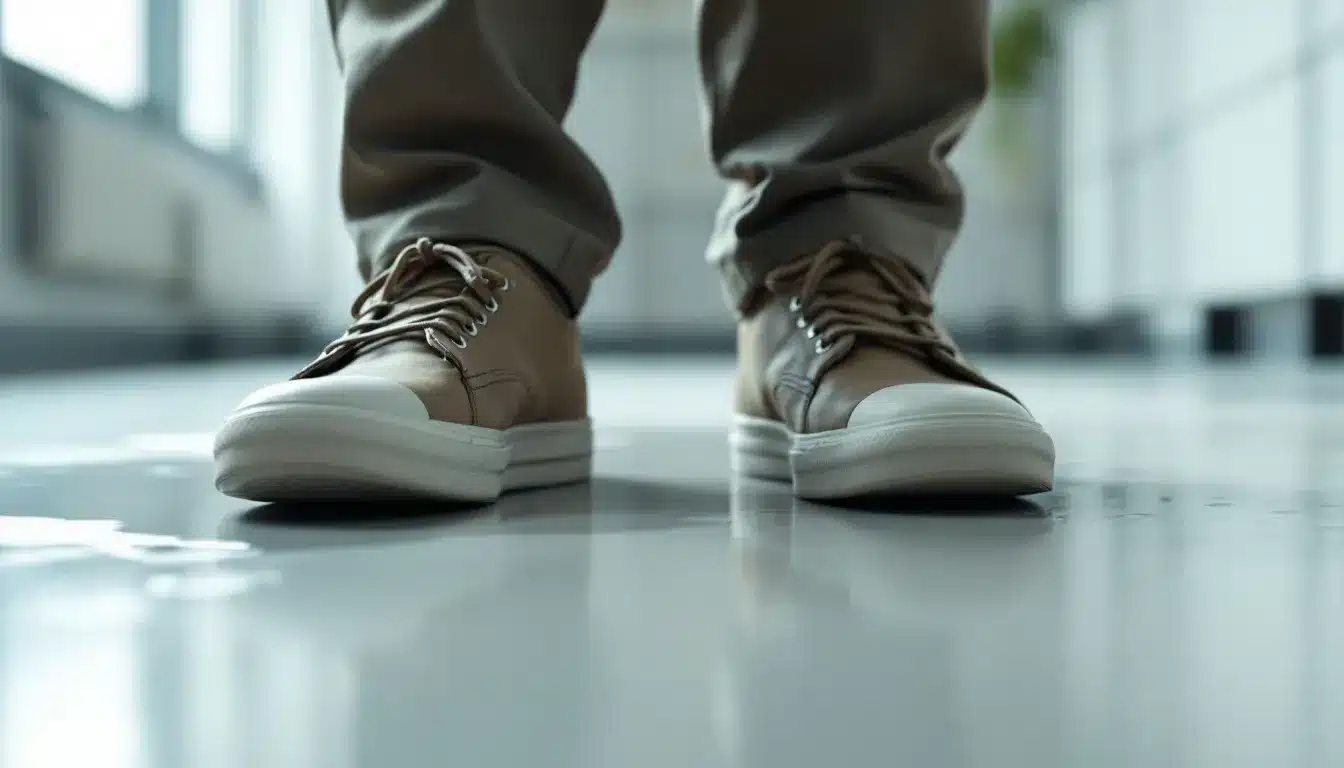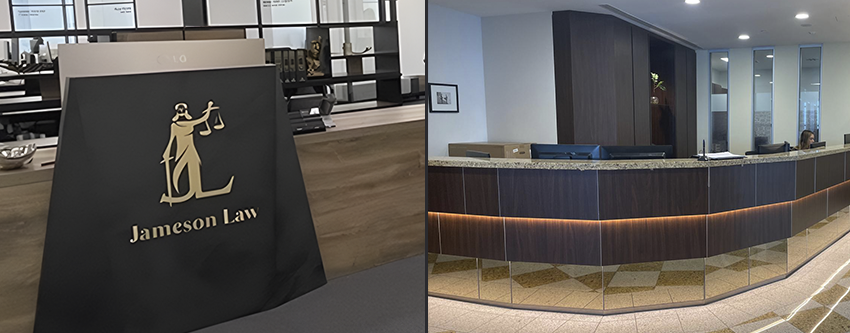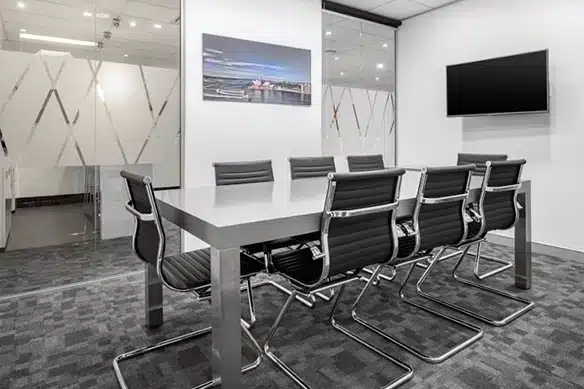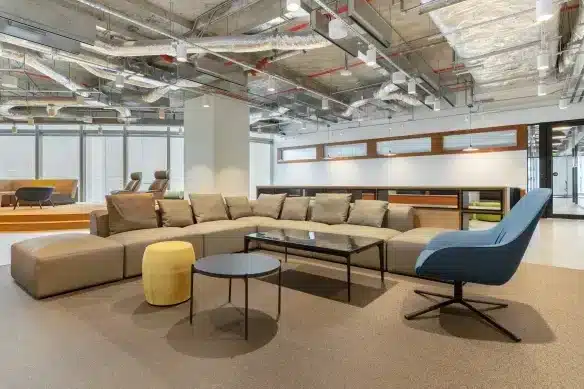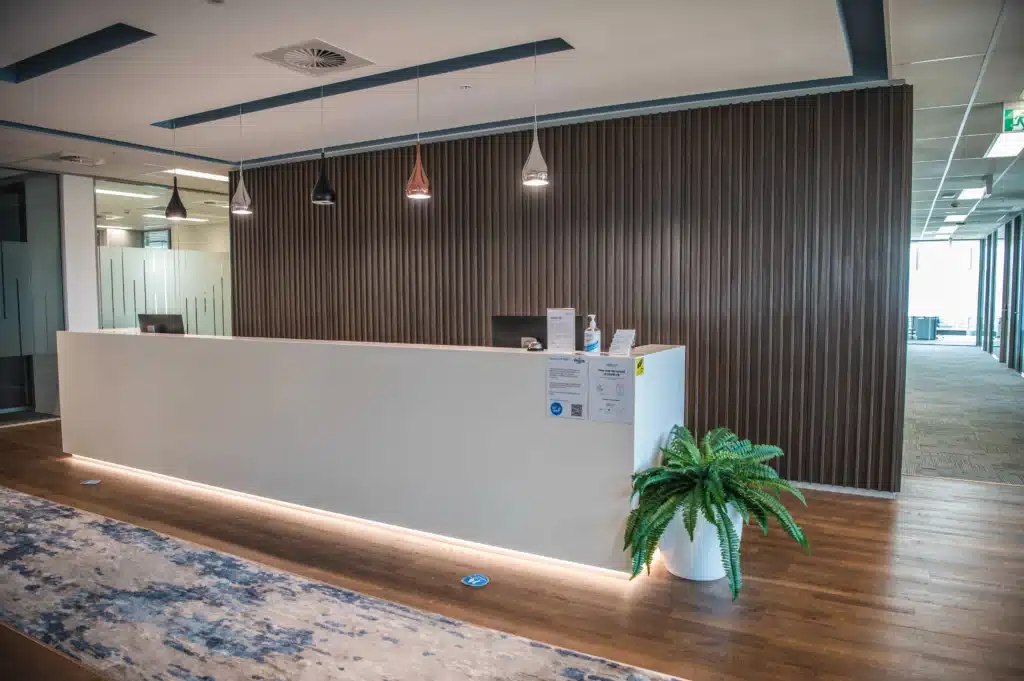Slip and fall accidents can happen anywhere, anytime, and often lead to serious injuries. These incidents fall under personal injury law, a complex area that requires expert navigation.
At Jameson Law, we’ve seen firsthand how these accidents can impact lives and livelihoods. Our team is dedicated to helping victims understand their rights and pursue fair compensation under Australian premises liability law.
What Are Slip and Fall Accidents?
The Prevalence of Slip and Fall Incidents
Slip and fall accidents are more common than most people realise. In Australia, these incidents account for 42% of hospitalised injury cases and 40% of accidental injury deaths in 2020-2021 (as reported by Tunstall Healthcare). This statistic highlights the widespread nature and severity of these accidents.
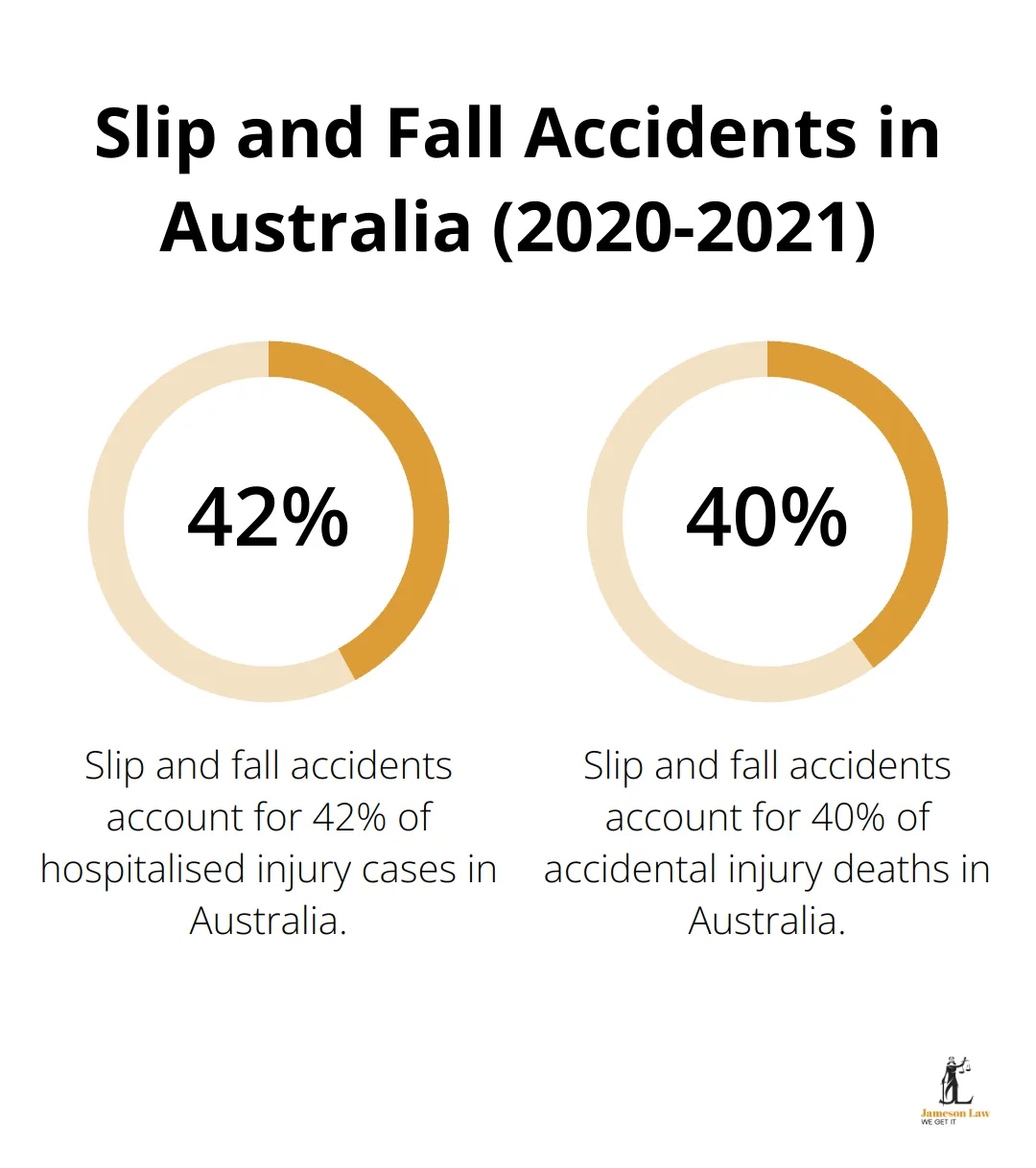
Common Causes of Slip and Fall Accidents
Wet floors lead the list of causes behind slip and fall incidents. Inadequate signage often contributes to accidents, particularly in high-traffic areas such as shopping centres and restaurants. Other frequent causes include uneven surfaces, poor lighting, and obstacles in walkways, which create hazardous conditions for unsuspecting individuals.
Types of Injuries from Slip and Fall Accidents
Slip and fall accidents can result in a wide range of injuries, from minor bruises to life-altering conditions. Fractures (particularly in the hips and wrists) are common among older adults. Spinal cord injuries, while less frequent, can have devastating long-term effects. Head injuries are especially concerning, as they can lead to cognitive impairments that may not become apparent immediately.
Duty of Care in Australian Premises Liability Law
Property owners and occupiers have a legal duty to maintain safe premises and protect visitors from foreseeable harm. This duty of care includes regular hazard repairs and the placement of adequate warning signs. However, the specifics of this duty can vary depending on the circumstances of each case.
Immediate Actions After a Slip and Fall
If you experience a slip and fall accident, take immediate action. Document the scene by taking photos, report the incident to the property owner or manager, and collect contact information from any witnesses. These steps can significantly strengthen your case if you decide to pursue legal action.
The Importance of Medical Attention
Seek medical attention after a fall, even if you feel fine initially. Some injuries (particularly head traumas) may not show symptoms right away. Prompt medical evaluation not only ensures your health but also provides essential documentation for any potential legal claims.
As we move forward, it’s important to understand how to establish liability in slip and fall cases. This knowledge can make a significant difference in the outcome of your claim.
How to Prove Liability in Slip and Fall Cases
Understanding Negligence in NSW
To establish liability in slip and fall cases, you must prove negligence under the Civil Liability Act 2002 (NSW). This law outlines the framework for determining fault in personal injury cases. You need to demonstrate that:
- The property owner owed you a duty of care
- They breached that duty
- The breach caused your injury
- You suffered damages as a result
For instance, if a shopping centre fails to address a known hazard (such as a wet floor) and you slip, they may be found negligent. However, the law also considers whether the risk was obvious and if you took reasonable care for your safety.
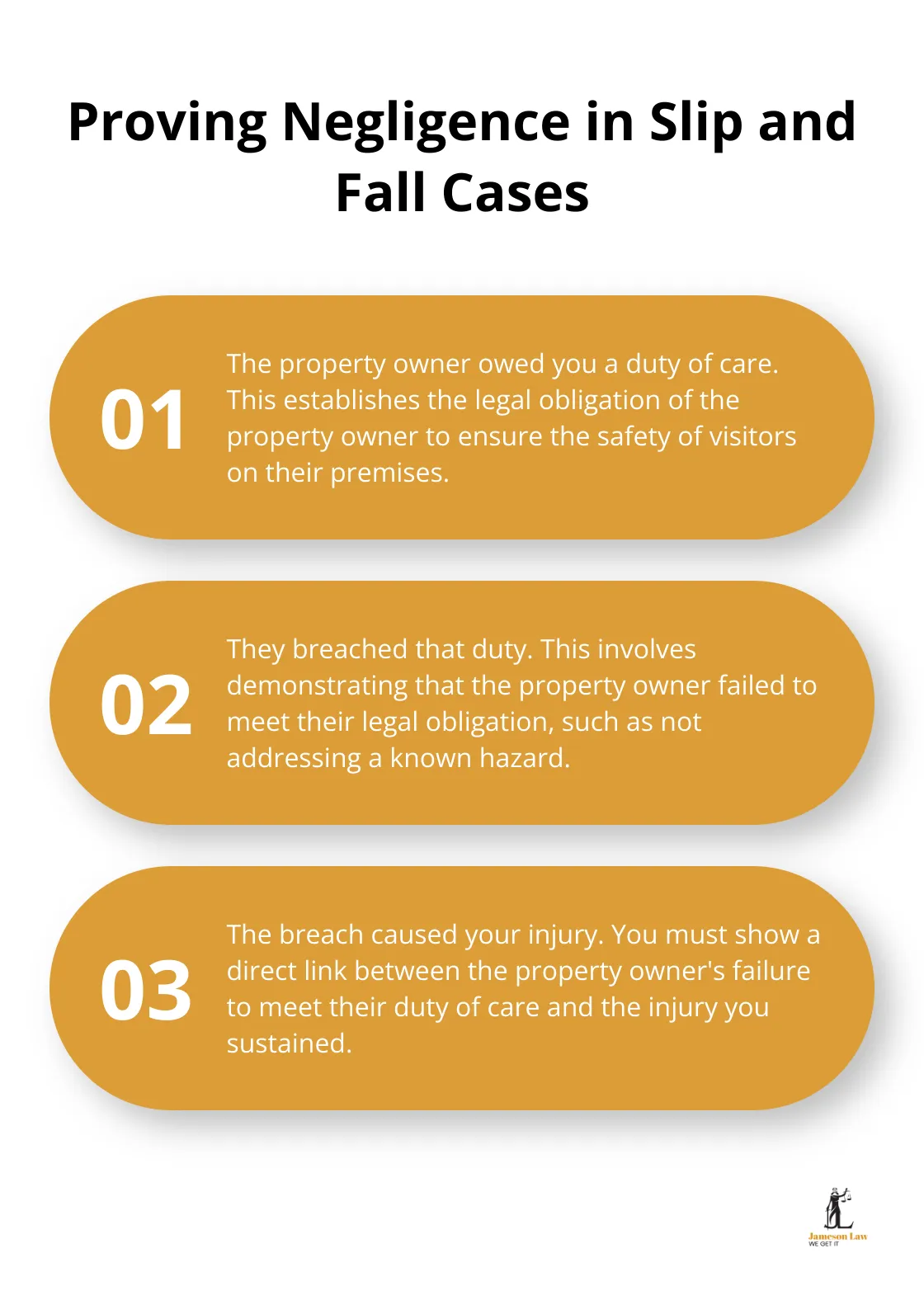
The Power of Evidence
Strong evidence forms the foundation of any successful slip and fall claim. The NSW Civil and Administrative Tribunal emphasises that comprehensive evidence strengthens your case. Key pieces of evidence include:
- Photographs of the accident scene
- Witness statements
- Incident reports
- Medical records
- CCTV footage (if available)
You should collect this evidence as soon as possible after the accident. Memories fade, and physical evidence can change or disappear. Prompt evidence collection often makes a significant difference in case outcomes.
Time Constraints for Legal Action
The Limitation Act 1969 (NSW) sets time limits for filing personal injury claims. In most cases, you have 6 months after the date of the injury or accident to start legal proceedings. However, this can vary depending on your specific circumstances.
You should not delay seeking legal advice. Early consultation with a lawyer improves your chances of building a strong case. Quick action also ensures the preservation of important evidence and fresh witness memories.
In some instances (such as cases involving minors or individuals with disabilities), the time limit may extend. However, it’s always better to act promptly rather than rely on potential extensions.
The Value of Legal Expertise
Slip and fall cases involve complex legal issues that require professional guidance. A skilled personal injury lawyer can help you understand your rights, gather compelling evidence, and construct a robust case for compensation.
Legal experts can navigate the intricacies of NSW personal injury law, effectively advocate for their clients, and maximise the chances of a favourable outcome. Their experience in handling similar cases can provide valuable insights into the best strategies for your situation.
As we move forward, let’s explore the types of compensation available in slip and fall cases and the factors that influence the amount you might receive.
How Much Compensation Can You Get for a Slip and Fall?
Types of Compensation Available
Slip and fall accidents often result in significant financial burdens. In Australia, compensation for slip and fall victims can cover medical expenses, lost wages, and pain and suffering. Economic losses include medical expenses, rehabilitation costs, lost income, and future loss of earning capacity. Non-economic losses encompass pain and suffering, loss of enjoyment of life, and psychological trauma.
The Australian Institute of Health and Welfare reports that the average cost of a hospitalisation due to a fall is around $9,000. However, severe injuries can result in much higher expenses. For instance, spinal cord injuries can cost upwards of $5 million over a lifetime (according to estimates from the Australian Spinal Cord Injury Register).
Factors That Influence Compensation Amounts
Several factors affect the amount of compensation you might receive. The severity and long-term impact of your injuries play a significant role. A Monash University Accident Research Centre study found that 60% of serious injury crashes involving cyclists occurred at intersections.
Your age and pre-existing health conditions also influence compensation. Younger individuals with long working lives ahead may receive higher amounts for loss of future earnings. The circumstances of the accident, including the property owner’s level of negligence, can impact the final settlement.
Strategies to Maximise Your Compensation
To maximise your compensation, you should act quickly and strategically. Document everything related to your accident and injuries. Keep all medical records, receipts for expenses, and evidence of lost income. The Australian Lawyers Alliance emphasises the importance of documenting all aspects of the incident and its aftermath to support your claim.
You should avoid settling too quickly with insurance companies. Their initial offers are often lower than what you might be entitled to. A study by the Insurance Council of Australia revealed that claimants who negotiated with the help of a lawyer received on average 3.5 times more compensation than those who settled directly with insurers.
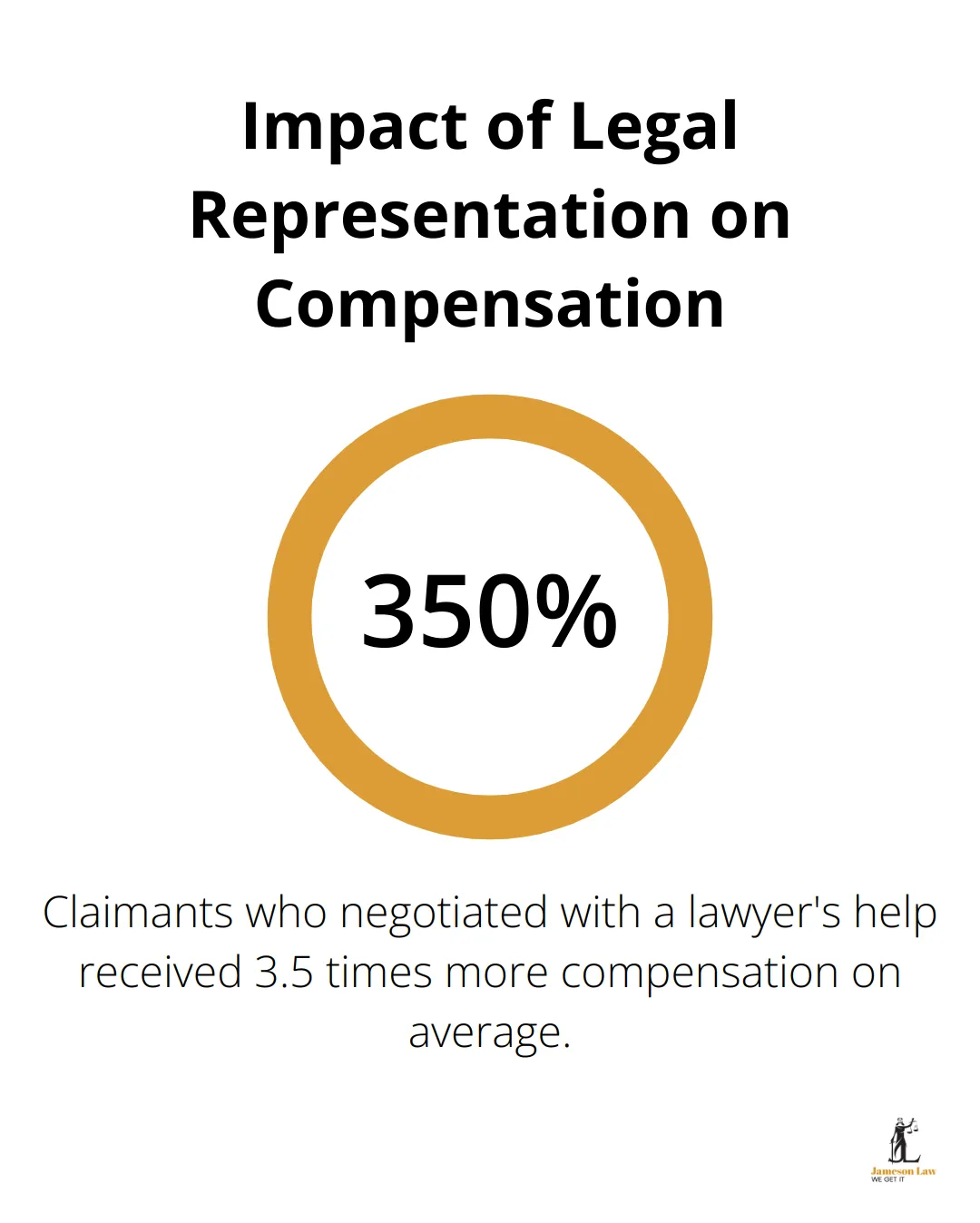
The Role of Legal Expertise
Legal experts can navigate the intricacies of Australian personal injury law, effectively advocate for their clients, and maximise the chances of a favourable outcome. Their experience in handling similar cases can provide valuable insights into the best strategies for your situation.
A skilled personal injury lawyer can help you understand your rights, gather compelling evidence, and construct a robust case for compensation. They can also negotiate aggressively with insurance companies to secure the best possible outcome for your situation.
The Importance of Comprehensive Documentation
Thorough documentation forms the backbone of a strong compensation claim. This includes:
- Detailed medical records
- Photographs of the accident scene and your injuries
- Witness statements
- Incident reports (if available)
- Records of all expenses related to your injury
The more comprehensive your documentation, the stronger your case will be. This can significantly impact the final compensation amount you receive.
Final Thoughts
Slip and fall accidents can devastate lives physically and financially. Personal injury law for slip and fall cases protects your rights and helps secure fair compensation. We explored incident prevalence, common causes, injury types, and the legal framework surrounding premises liability in Australia.
Jameson Law offers expert guidance in personal injury law for slip and fall cases. Our team provides tailored legal support to achieve the best possible outcomes for our clients. We understand the toll these accidents take and offer a No Win No Fee policy for personal injury claims.
Don’t let a slip and fall accident derail your life. With the right legal support, you can protect your rights and secure the compensation you deserve. Let Jameson Law guide you through the complexities of personal injury law and help you on your path to recovery.



